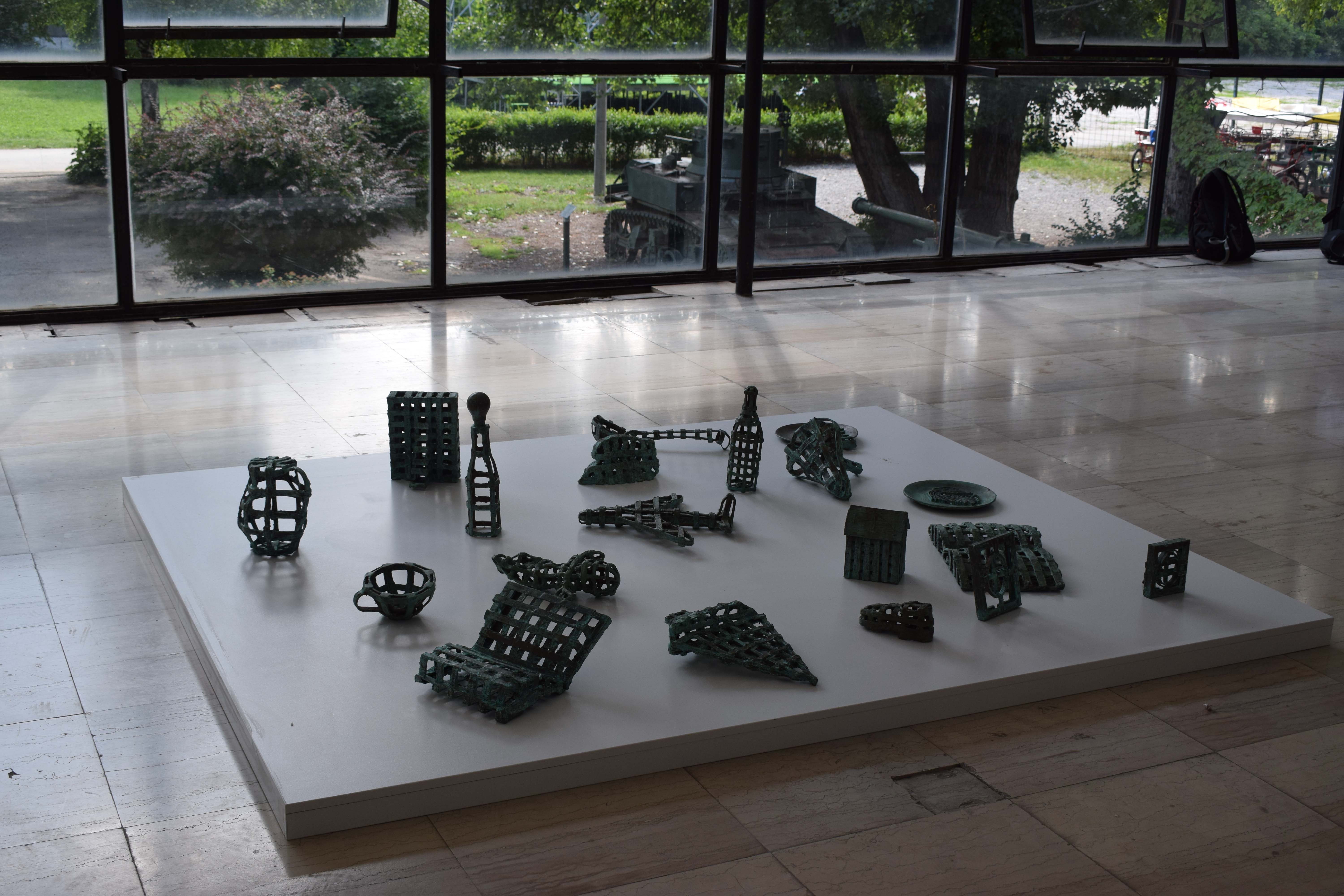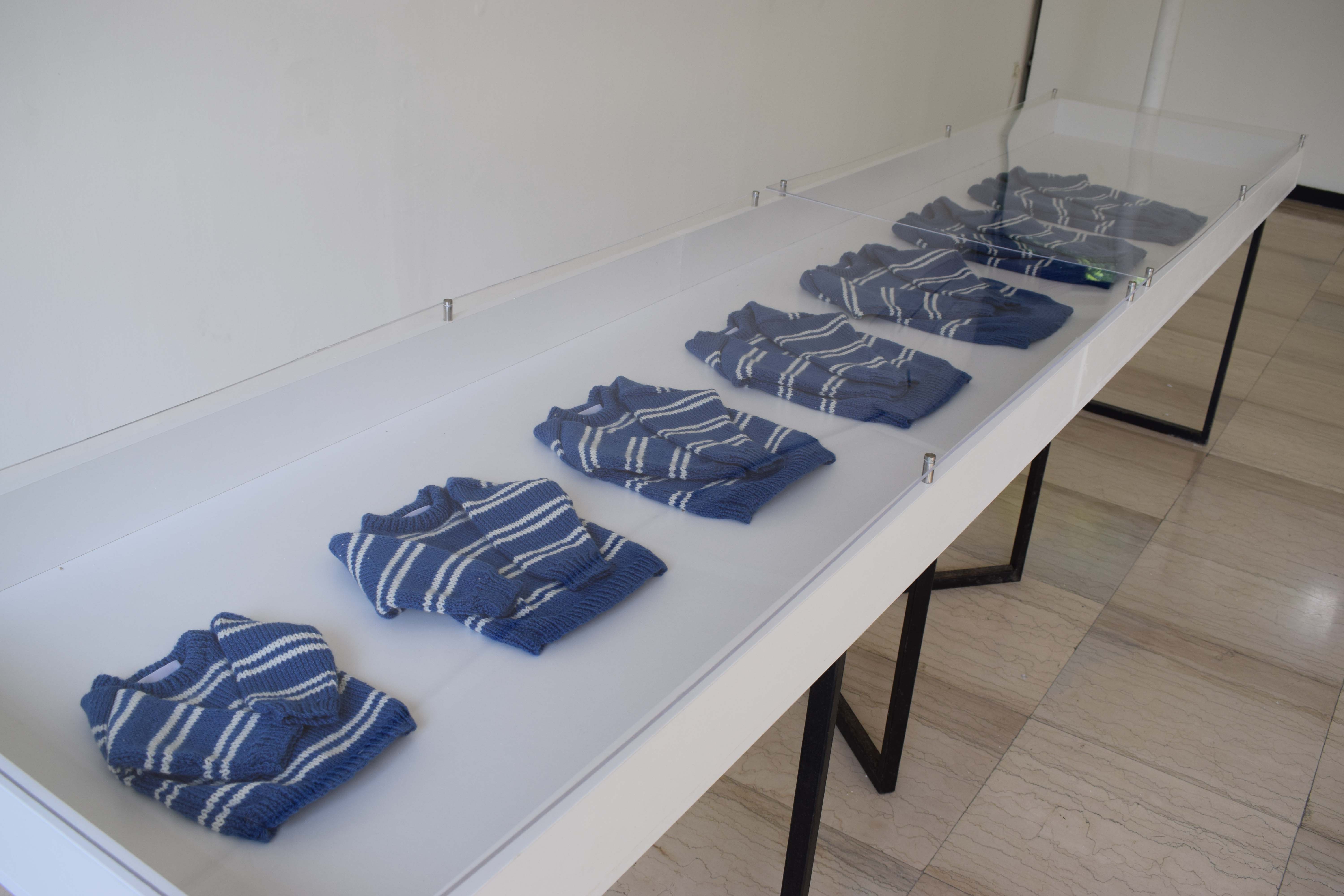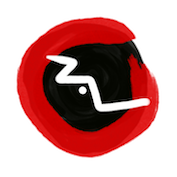This is a blog post by Professor Paul Coldwell, written about the REconciliations exhibition, History Museum of BiH, June 29th 2018
I was delighted to be invited to show in the exhibition ReConciliation , curated by Dr Paul Lowe and Elma Hasimbegovic as part of the AHRC Art & Reconciliation project. The exhibition ReConciliation provided me with a unique opportunity to show work that I made twenty years ago, before ever visiting Sarajevo, alongside new work made as a resulting of visiting in January 2018 and conducting research within the History Museum.

The earlier work had been made in response to Martin Bell’s BBC radio broadcast of April 1996 in which he signed off as BBC War Correspondent and reflected on the tragedy of the Bosnia war. I made two pieces of work; the first an artist’s book With the Melting of the Snows in which, through three visual chapters of computer manipulated photographs, I attempted to imagine the Siege of Sarajevo and make visual equivalents to Bell’s text. The second piece was a large installation of bronze objects Abandoned Landscape in which I tried to suggest objects left behind in flight, as if suddenly discarded. Whilst twenty years ago it was Bell’s broadcast that got through my defences and impelled me to respond, the new work I have made takes its key from research in Sarajevo in January as part of the Art & Reconciliation project.
I was immediately drawn to a sweater belonging to Nermin Divović a seven-year-old child who was tragically shot by a sniper 100yards from the museum. His sweater, donated by his family is displayed alongside some photographs of him playing wearing the same sweater, as part of an exhibition remembering the siege.

I have attempted to memorialise this short life, by commissioning seven duplicate sweaters, one for each year of his life, the first a tiny sweater for 0-1-year-old, through to one to fit a 6-7-year-old. I was really grateful to Anne Jones, a friend and curator at the Arts Council who helped me find a knitter. The sweaters were eventually hand knitted for me by Carol McDavid, a lady living in rural Wales (UK) to whom I sent drawings and photographs for her to work from. The sweaters entitled A Life Measured: Seven Sweaters for Nermin Divović are presented in a line as if recording a life which has been cut short.
Another piece, Three Bottle for Sarajevo (for Edin Numankadic) takes its origins from the importance of plastic water containers to collect water in the siege and references a joke told to me by the artist Edin Numankadic’s that a man was crossing Sniper’s Alley with plastic bottles to collect water when a sniper shot his bottles, so the water poured out. The man screamed at the sniper, ‘don’t shoot the bottles, shoot me!’ Here in the black recesses of humour, lies a sad truth that without water you would be dead anyway.
For me it is very poignant to show all these works in the context of Sarajevo and the Museum and its collection. My piece A Life Measured: Seven Sweaters for Nermin Divović is shown alongside the original sweater and sets up a dialogue between the authentic object and the imaginative space in which art functions. Furthermore, a hundred yards from the museum is a memorial stone commerating Nermin’s death so in this context I hope that my memorial of woollen sweaters suggests another way of remembering. In my case it is remembering through the actions of knitting with their associations with love, warmth and nurture.
There are always surprises when showing work. One that I appreciated was how, when viewing Abandoned Landscape on the floor in the gallery, the viewer can glimpse through the windows to see the remains of WW1 I tanks in the garden of the museum which seem to add a degree of menace to my everyday discarded objects such as bottles, children’s toys and picture frames that make up my installation
In terms of reconciliation, I believe that art has a powerful role to play in presenting images onto which ideas and feeling can be attached. Art is vital in supporting empathy, the capacity to see another’s point of view and without empathy, I believe reconciliation is probably impossible. Art provides a portal through which to view the world and as an overall exhibition I think it certainly offers that to the viewer. Reconciliation is a process and my hope is that in some small way, my work and that of my fellow contributors will provide means to help think about the immediate past and make a small contribution as to how we might imagine the future.
Paul Coldwell
